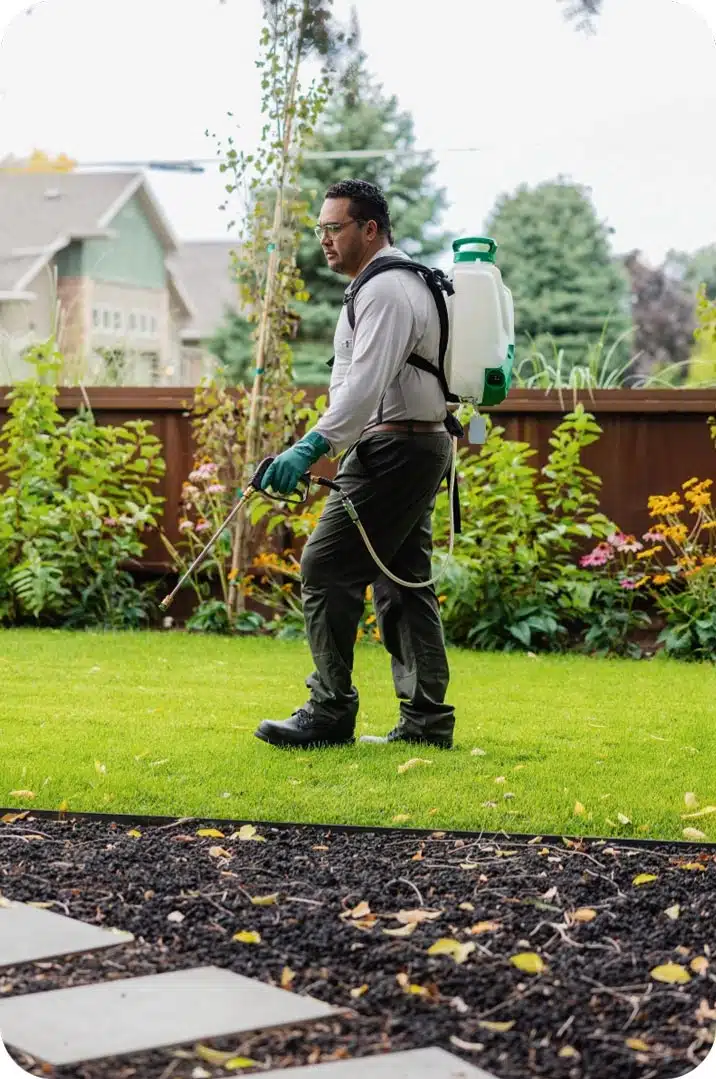Bed Pest Therapy Breakdown: Comparing Chemical Vs. Non-Chemical Solutions
In the realm of pest control, specifically when managing the consistent issue of bed pests, the option between chemical and non-chemical therapy services can be an essential one. Both approaches offer distinct advantages and disadvantages, influencing variables such as performance, security factors to consider, and general price. By checking out the nuanced information of each method, a clearer understanding of which course to go after in attending to a bed pest problem can be attained.
Effectiveness of Chemical Therapies
Chemical treatments for bed bug infestations have actually been extensively recognized for their rapid and potent efficiency in getting rid of these insects. When considering the effectiveness of chemical treatments, it is important to comprehend that they can give a quick and complete remedy to a bed pest trouble.
Moreover, chemical therapies have the benefit of supplying recurring results, implying that they can continue to eliminate bed insects also after the first application. This recurring activity is specifically helpful in combating any potential re-infestations. Additionally, the quick action of chemical therapies can bring relief to individuals dealing with serious bed bug problems, allowing them to reclaim control of their space rapidly.
Safety Interest In Chemical Solutions
One important aspect that needs careful consideration when using chemical remedies for bed pest treatment is making sure the security of occupants and the setting. While chemical therapies can be effective in getting rid of bed bugs, they might posture threats if not dealt with effectively. One of the key safety and security issues with chemical options is the prospective injury they can create to human health. Exposure to specific chemicals made use of in bed insect treatments can cause respiratory system problems, skin irritation, or various other unfavorable responses, particularly in individuals with pre-existing conditions or level of sensitivities. Additionally, improper application or dose of chemical pesticides can result in hazardous deposits sticking around in the treated location, presenting long-lasting health risks to passengers.
Moreover, the ecological influence of chemical options is one more considerable consideration. Some chemicals used in bed pest treatments might be dangerous to helpful pests, wildlife, and ecological communities if they seep into the soil or water supply. It is crucial to make use of chemical therapies deliberately, adhering to security guidelines, and considering much less harmful options to alleviate these threats and make sure the risk-free and efficient administration of bed insect invasions.
Benefits of Non-Chemical Strategies
Thinking about the prospective security problems and ecological influence connected with chemical options for bed pest treatment, exploring non-chemical methods presents a promising choice with a number of distinct advantages. Non-chemical treatments are environmentally pleasant, as they do not contribute to air or water air pollution, making them a sustainable selection for bug control.
Furthermore, non-chemical solutions can be efficient in targeting bed insects, including hard-to-reach areas where chemical therapies might not pass through. Methods such as warm treatment, vacuuming, vapor cleaning, and bed mattress coverings offer complete eradication without making use of hazardous chemicals. In addition, non-chemical strategies can be less disruptive, needing marginal prep work and enabling quicker reentry right into treated locations. In general, choosing for non-chemical bed pest treatment methods not only focuses on safety and security and environmental protection but additionally guarantees reliable and detailed insect control.
Limitations of Non-Chemical Treatments

In addition, non-chemical therapies typically require several applications to achieve successful eradication. This can be lengthy and might not always guarantee complete removal of all bed bugs and their eggs, especially in hard-to-reach or surprise places.
Furthermore, the success of non-chemical therapies heavily counts on correct execution and thoroughness, which can be testing for individuals without professional expertise. Poor application of non-chemical methods might cause incomplete elimination, bring about persistent problems and the need for additional therapies.
Therefore, while non-chemical treatments have their advantages, it is necessary to acknowledge these limitations and consider them when identifying one of the most reliable strategy for taking care of bed pest problems.
Cost Comparison: Chemical Vs. Non-Chemical Options
Offered the restrictions associated with non-chemical therapies, a crucial facet to examine in the context of bed bug administration is the price comparison in between chemical and non-chemical alternatives. In contrast, non-chemical treatments like warmth treatment or heavy steam can be more expensive, with prices varying from $1,000 to $6,000 for an entire home. While the first expense of chemical therapies might seem reduced, multiple treatments may be needed to fully eradicate the problem, potentially increasing the total price.
Verdict

Considering the potential security issues and environmental impact linked with chemical options for bed bug therapy, discovering non-chemical techniques offers an appealing choice with numerous distinct advantages.Offered the constraints linked with non-chemical therapies, an essential facet to examine in the context of bed insect administration is the cost contrast between chemical and non-chemical options. In contrast, non-chemical therapies like warmth treatment or steam can be extra costly, with expenses varying from $1,000 to check $6,000 for an entire home. pest control a While the initial cost of chemical treatments might appear reduced, numerous therapies might be needed to completely get rid of the problem, potentially enhancing the general cost.In final thought, when contrasting chemical and non-chemical bed bug therapy choices, it is crucial to consider efficiency, security, benefits, limitations, and cost.